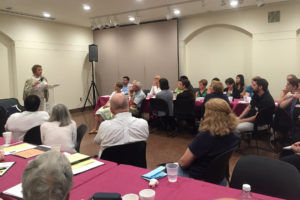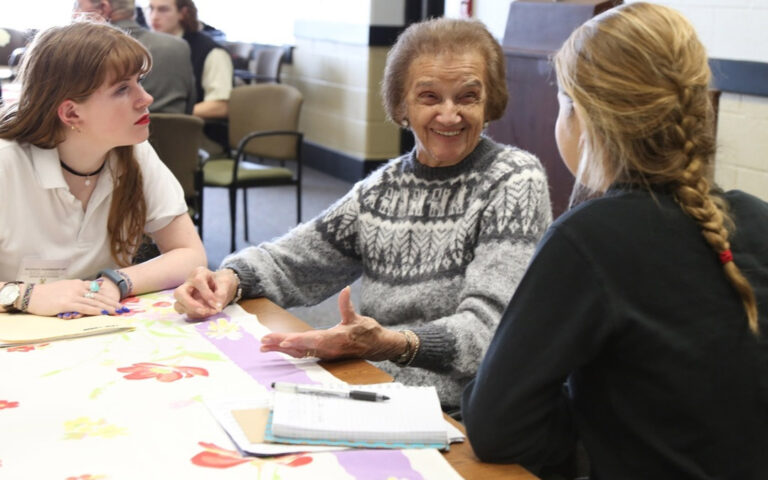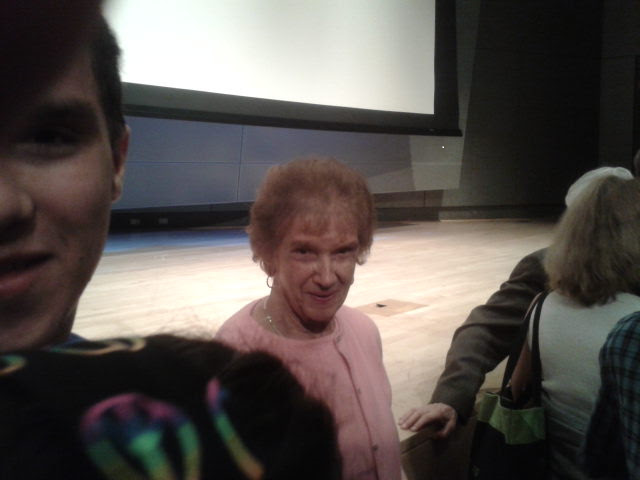Bluma Shapiro z”l

A blog post by Director of Education Ilene Dackman-Alon. To read more posts by Ilene click here.

One of the most impactful ways that we can learn about the Holocaust is to listen to Survivor testimony. Survivor testimony humanizes the experience of the Holocaust allowing the listener to understand that Survivors are real people; with real emotions that are describing events that actually happened. When students hear Survivor testimony, they gain both an understanding of the events of history, but also gain empathy as they witness the raw and powerful emotions of the testimonies.
The first time I heard Bluma Shapiro’s name was almost 11 years ago when my son told me that he walked down the aisle with her at the candle-lighting ceremony for Yom HaShoah in 2012. He told me that Bluma asked him his name and he was shocked that she told him that she knew his great-grandparents, Chana and Tuvia Alon. She went on to tell him that she used to play cards with them when they lived in Baltimore in the 1960s.
A few weeks later, we met Bluma again, this time at the JCC, where we watched a preview of the documentary “See You Soon Again.” The movie focuses on the lives of Bluma and Leo Bretholz, two survivors who made it their mission to share with local school children the unimaginable experiences they had endured during the Holocaust -each of them having told their personal stories thousands of times each.

That summer, Bluma spoke at the Summer Teachers Institute. This time, I listened with the teachers as Bluma shared her story of growing up in Bialystok, Poland – being the youngest of five siblings. She shared with us some of the horrors of surviving three concentration camps including Auschwitz. After the war, she returned to Bialystok and met Philip Shapiro and they eventually came to Baltimore where they owned a kosher meat market. As I listened to this strong woman stand in front of us sharing her story, she spoke with such conviction so that we would bear witness to her testimony and understand that the Holocaust happened and that we never forget the millions who perished.

Exactly two years ago, I travelled to Poland and while we were visiting places like Majdanek and Auschwitz, I thought about Bluma and her story of survival and her unbelievable will to share her story with students for so many years. I felt connected to her knowing that she knew my husband’s grandparents and I imagined them sitting around the table playing cards. I thought of Bluma as we were walking on a street outside of Lublin- and I just had to take a picture.

Earlier this month, on March 10th, Bluma Shapiro passed away at the age of 97. I called my son that day to tell him that Bluma had passed away. He told me that he had been thinking of her that morning.
Zikhronah Livrakha, May her memory be a blessing.
